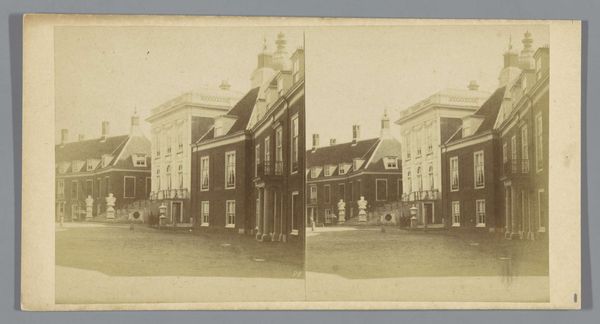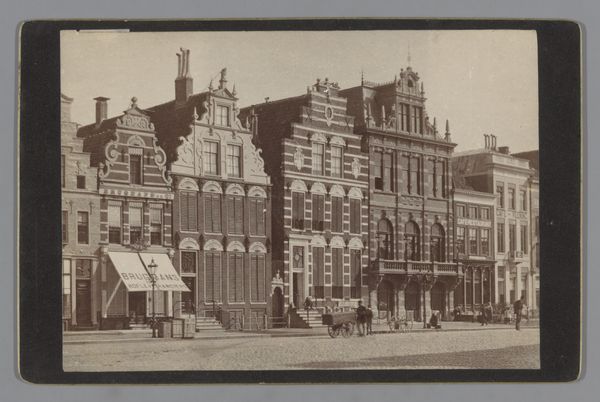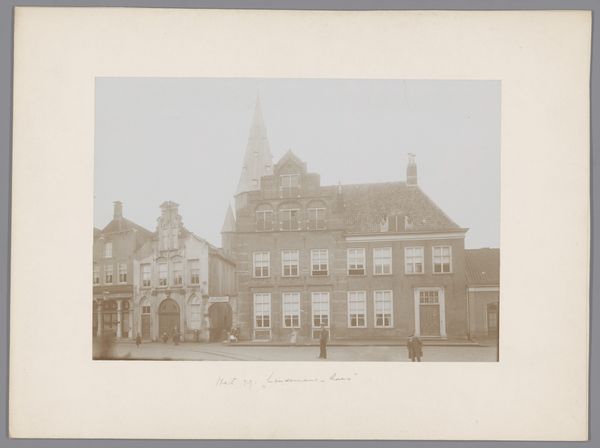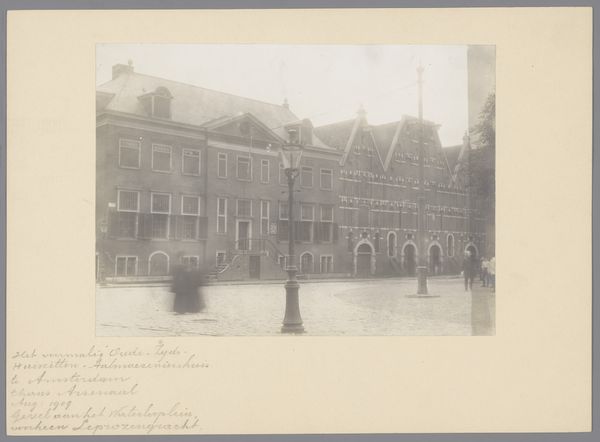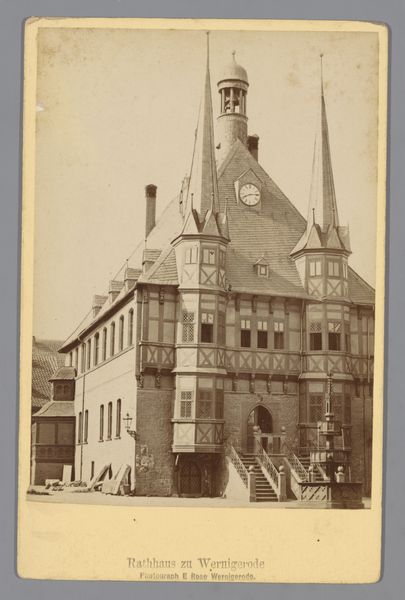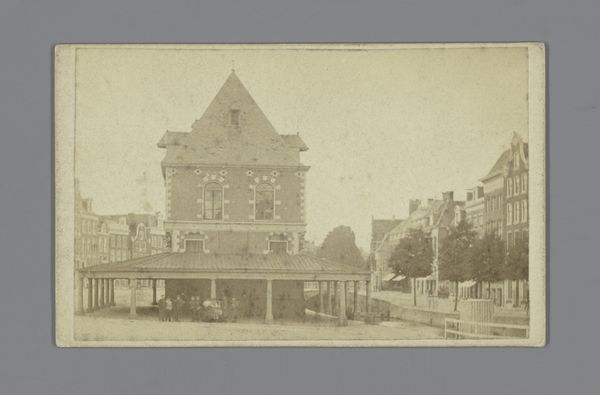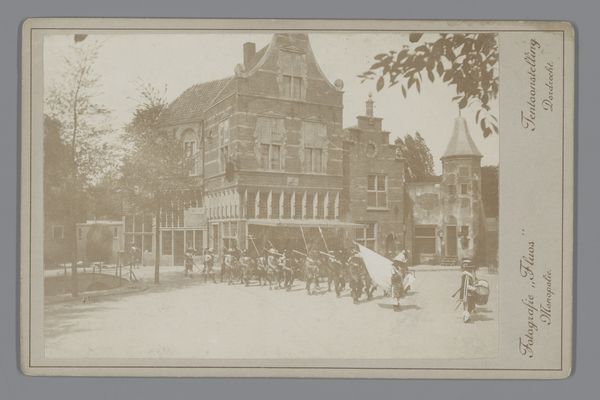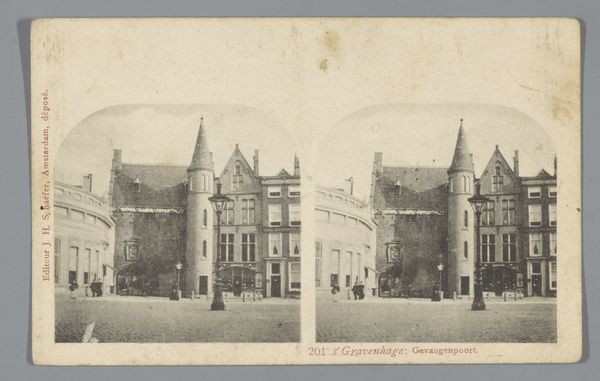
Standbeeld van koning Willem II op het Buitenhof in Den Haag 1859 - 1865
0:00
0:00
Dimensions: height 86 mm, width 173 mm
Copyright: Rijks Museum: Open Domain
Editor: This photograph by Pieter Oosterhuis, taken between 1859 and 1865, showcases a statue of King Willem II in the Buitenhof in The Hague. The sepia tones and formal composition give it a very stately, almost imposing feel. What’s your take on it? Curator: It’s a powerful representation of Dutch national identity in the mid-19th century, isn't it? The photographic medium itself, still relatively new, was being deployed to solidify historical narratives and legitimize power structures. Consider the conscious framing; how does the statue's placement in front of the imposing governmental building speak to ideas of authority and permanence? Editor: That makes sense. It’s clearly intended to project an image of strength and stability. Is that why the photo is composed the way it is? Curator: Precisely! Neoclassical sculpture, as we see in the statue, often evokes Roman ideals of leadership and civic virtue. Oosterhuis' photograph captures that carefully constructed image. But let's also consider what isn't shown – the everyday life of the people. The image prioritizes the symbolic over the lived reality, which tells us a lot about the priorities of the era. Editor: So, beyond just documenting the statue, the photograph is also making a statement about power and the idealized vision of the nation? Curator: Absolutely. And the act of photographing the statue and disseminating that image through prints contributes to the construction and maintenance of that national narrative. What does the cityscape say about the cultural values promoted during the monarchy at the time? Editor: That’s fascinating. I hadn’t considered how the very act of capturing and distributing this image reinforced the dominant ideology. It gives me a whole new perspective. Curator: It’s about seeing beyond the surface representation and understanding how art is always embedded in broader social and political contexts.
Comments
No comments
Be the first to comment and join the conversation on the ultimate creative platform.


